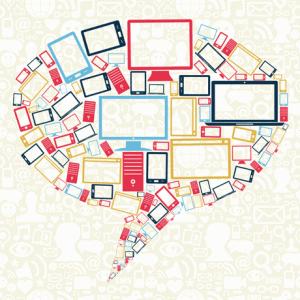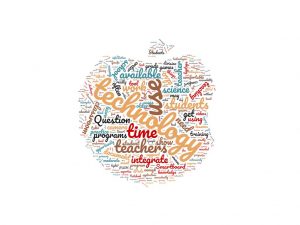GEM is an acronym for a pedagogical approach to teaching science that involves students taking an active part in constructing their own understanding of relationships and concepts, as well as learning how the scientific inquiry process works (Khan, 2007).
G in GEM stands for students Generating ideas about relationships,
E represents students Evaluating the relationships they have constructed,
M is the stage where students Modify those relationships to account for any discrepancies discovered during the modification stage, or to rectify any misconceptions held.
T-GEM is an adaption of the strategy to incorporate the integration of Technology into its implementation in the form of simulations or interactive models.
In her case study, Khan highlighted an important piece to the GEM cycle. Background content knowledge provided by the teacher at the beginning of the lesson is an important step to help students make some sense of the data they will be seeing in the experiments and simulations. This is essentially activating their schema or their prior knowledge in order for the students to build on their conceptual knowledge. If the students don’t know what they are looking at, seeing relationships in the data becomes difficult (Khan, 2007).
Computer simulations that assist students’ visualization of scientific phenomena have been associated with gains in conceptual understanding among science students (Khan, 2010). This corresponds directly with the TPCK pedagogy allowing teachers to integrate interactive science simulations for students enabling them to grasp somewhat “invisible” concepts.

Over many years of teaching the science of Heat Energy, every year the students have misconceptions around the process of boiling liquids, and in particular the boiling of water. These misconceptions appear to have their basis in the way students observe their world around them (Johnson, 1998; Collins & Gentner, 1987). Andersson (as cited in Driver, Guesne & Tiberghien, 1985, pg 82) found that 40 percent of twelve year old students expect water to continue to heat up even after it has reached its boiling point. The students also thought that the amount of time that heat was applied would affect the temperature would continue to affect the boiling point. This is true for my own experience with this age group doing a heating curve of water experiment. As the students got older, the percentage of students with this misconception decreased but there was still a large percentage who continued to misunderstand the nature of boiling. Driver, Guesne & Tiberghien (1985, p.82) state the “children’s logic had led them to think that the time of boiling and energy supply could influence the boiling point of a pure liquid.” They argue that “much of the confusion arises from the child’s view that heat and temperature are the same” (p.82). Since children have this preconceived notion they associate the increase in temperature with a corresponding increase in heat.
In order to combat this misconception in my science classroom I would use the T-GEM method to provide some computer simulations that complement the physical experiment of boiling water in the classroom.
Heating Curve of Water Lesson Plan
- Provide an Anticipation Guide on Heat and Temperature for students to complete and to generate a class discussion. This should elicit misconceptions, if any, to be aware of as we progress through the lesson.
- Generate – Students are asked to present a hypothesis on what they predict will happen when they heat an ice cube in a beaker over a period of time. They should use their knowledge and understanding of particle movement in matter, and heat energy to explain their hypothesis.
- Students will then conduct the physical experiment using hot plates, beakers, ice cubes, thermometers, and timing devices. They will work in partners, one to observe the beaker and read the thermometer at 60 second intervals, and the other to record the data and time the intervals. This could also be recorded by video using a device for students to replay.
- At the completion of the experiment, the students will graph their data to show the heating curve and provide an explanation to fit their observations, and prove or disprove their hypothesis. This is generally where most of the students have difficulty understanding why the temperature plateaus as the water changes states from solid to liquid, and again from liquid to gas. They are usually surprised that the temperature does not continue to rise at a steady pace throughout the whole process. It is here that I feel the computer simulations will benefit the students as they will be able to see the particles moving in one, and they can rerun the computer simulation showing the boiling point to determine the cause of the plateau.
https://simbucket.com/meltingandboiling/
http://www.physics-chemistry-interactive-flash-animation.com/matter_change_state_measurement_mass_volume/boiling_pure_substance_water_from_liquid_to_gas_vaporization.htm
- Evaluate – Students will be introduced to the two computer simulations showing the heating curve of water. One simulation allows them to view the particle movement as they are heated up demonstrating the changes in state, and the other allows them to complete the boiling water experiment in a virtual situation where they can observe the changes as the time increases. This also generates a heating curve graph for the students to compare to their own graph. If the students videoed the experiment, they can generate comparisons between the computer simulation and their video observations.
- Modify – Given the new information from the computer simulations, students can compare their data with the computer generated data and come up with new hypotheses for the plateaus in temperature. Small group discussions would be held for students to compare data, understanding and hypotheses. Discussions will help determine if there is a need to repeat the experiment for better observations, or to design a different experiment to explain the data and scientific phenomena.
- After discussion and evaluation, students will write a conclusion for their experiment that allows for all the information generated through the physical experiment, as well as the computer simulations.
- Students can now take their observations and hypotheses and apply them to other pure liquids.
Hopefully this will allow the students to understand the concepts of heat energy and changing states of matter.
References
Driver, Guesne & Tiberghien. (1985). Children’s Ideas in Science. Open University Press.
Johnson, P. (1998). Children’s understanding of changes of state involving the gas state, Part 1: Boiling water and the particle theory. The International Journal of Science Education, 20(5), 567-583.
Khan, S. (2007). Model-based inquiries in chemistry. Science Education, 91(6), 877-905.
Khan, S. (2012). A Hidden GEM: A pedagogical approach to using technology to teach global warming. The Science Teacher, 79(8). This article was written about T-GEM with middle-schoolers.
Fournat, J. (n.d.). PCCL | INTERACTIVE PHYSICS SIMULATIONS |Physics and Chemistry by a Clear Learning : free interactive physics animations | online learning for sciences | School support with interactive flash animations for lessons and corrected exercises. Electricity, Mechanics, Waves, Optics, Chemistry, Nuclear Physics. For Upper School, Secondary School, High school, Middle School and Academy. Retrieved March 02, 2017, from http://www.physics-chemistry-interactive-flash-animation.com/
 As for my own definition, I would emphasize the idea that the technology is a tool to transform and transmit our learning. Technology is a tool, the effectiveness of a tool is not absolute, but is dependent upon how it is applied and new users may find novel uses for a particular tool. Technology is much bigger and more complex than a single device or site. The key driver in using technology in the classroom should be learning goals and how the technology can be used to achieve that goal. It does not have to appear in every lesson or unit, but should be strategically utilized to maximize the effectiveness of the tool, and student learning for the specific subject at hand. In science this may mean using a big screen and projector for a virtual visit to an archaeological site, or allowing students to manipulate tools to participate in a virtual dissection of a frog. It also might mean having technology readily available for students to create or find uses to enhance their learning while it is relevant to the moment. Technology should be like oxygen, ubiquitous, necessary, and invisible (Chris Lehmann). It should not be an addition to the learning, but an integral part of it, much like our pencil and paper.
As for my own definition, I would emphasize the idea that the technology is a tool to transform and transmit our learning. Technology is a tool, the effectiveness of a tool is not absolute, but is dependent upon how it is applied and new users may find novel uses for a particular tool. Technology is much bigger and more complex than a single device or site. The key driver in using technology in the classroom should be learning goals and how the technology can be used to achieve that goal. It does not have to appear in every lesson or unit, but should be strategically utilized to maximize the effectiveness of the tool, and student learning for the specific subject at hand. In science this may mean using a big screen and projector for a virtual visit to an archaeological site, or allowing students to manipulate tools to participate in a virtual dissection of a frog. It also might mean having technology readily available for students to create or find uses to enhance their learning while it is relevant to the moment. Technology should be like oxygen, ubiquitous, necessary, and invisible (Chris Lehmann). It should not be an addition to the learning, but an integral part of it, much like our pencil and paper.